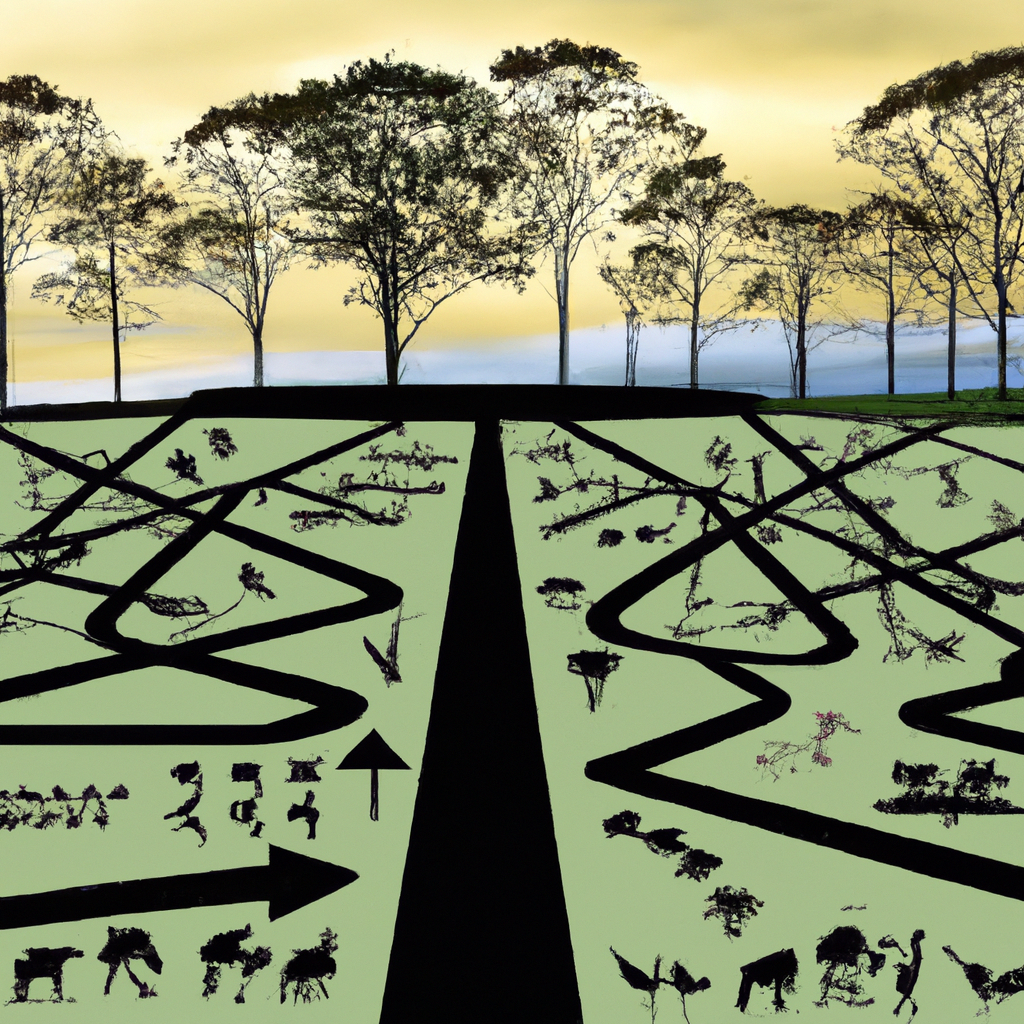Opening the door to the untamed wonders of the animal kingdom, wildlife conservation efforts beckon us to step into a realm where breathtaking diversity resides. As the clock ticks relentlessly, Earth’s precious creatures teeter on the edge of oblivion. From the mighty roar of the majestic tiger to the fragile flutter of a butterfly’s wings, endangered species face an uncertain future. Yet, in the face of adversity, a symphony of conservation efforts resonates across the globe, uplifting the harmony between nature and mankind. This article plunges deep into the heart of wildlife conservation, exploring the tireless dedication of individuals and organizations striving to safeguard the great tapestry of life that adorns our planet. Together, let us embark on a captivating journey through the triumphs and challenges of preserving these delicate ecosystems and the precious beings that call them home.
1. A Delicate Balance: Preserving Biodiversity Through Wildlife Conservation Efforts
Biodiversity, the variety of life on Earth, is a delicate balance that sustains our planet’s ecosystems and ensures its resilience over time. Through dedicated wildlife conservation efforts, we aim to preserve this delicate balance and protect the incredible richness of flora and fauna that exists around us.
1. Preserving Habitats: One crucial aspect of wildlife conservation is the preservation of habitats. By safeguarding natural spaces, such as forests, wetlands, and grasslands, we enable the diverse range of species to thrive. These habitats serve as safe havens, providing essential resources like food, water, and shelter to countless plants and animals. Fragmented habitats can lead to isolation and genetic inbreeding, which threatens biodiversity. Therefore, preserving and connecting natural spaces is vital for maintaining ecological balance.
2. Combating Poaching and Illegal Wildlife Trade: Poaching and the illegal wildlife trade remain significant threats to many endangered species. To protect biodiversity, concerted efforts are necessary to combat these illegal activities. By implementing rigorous laws and regulations, supporting anti-poaching initiatives, and raising public awareness, we strive to reduce the demand for wildlife products and disrupt the networks that drive this destructive trade.
3. Conservation Breeding and Reintroduction Programs: For species facing the threat of extinction, conservation breeding programs play a vital role. These programs focus on breeding endangered animals in controlled environments to increase their numbers and genetic diversity. Once these populations have stabilized, carefully planned reintroduction programs can be initiated. By reintroducing animals back into their natural habitats, we can restore populations and enhance the overall biodiversity of the ecosystem.
4. Promoting Sustainable Practices: Human activities, such as deforestation, pollution, and climate change, have a significant impact on biodiversity. To preserve wildlife and their habitats, it is essential to promote sustainable practices. This includes advocating for responsible land and resource management, supporting sustainable agriculture, and reducing our carbon footprint. By adopting sustainable practices, we can minimize our negative impact on biodiversity and create a harmonious coexistence between humans and wildlife.
Conclusion: Preserving biodiversity through wildlife conservation efforts is paramount for the well-being of our planet and future generations. It requires a collective commitment to balancing our needs with the needs of other species. By protecting habitats, combating illegal activities, implementing conservation breeding programs, and promoting sustainable practices, we can safeguard the delicate balance of biodiversity and create a world where all life thrives harmoniously.
2. Unveiling the Guardians of the Wild: Heroes in the Fight to Save Endangered Species
In a world where the existence of countless species is threatened by human activities, a group of extraordinary individuals is stepping up to protect nature’s most vulnerable inhabitants. These unsung heroes, often working in the most remote corners of the globe, have dedicated their lives to preserving endangered species and ensuring a future where biodiversity can thrive.
The Guardians of the Wild are conquerors of immense challenges, tirelessly battling against poaching, habitat destruction, and the devastating impacts of climate change. With unwavering dedication, they act as the custodians of nature’s wonders, valiantly striving to safeguard the delicate balance of our planet’s ecosystems.
These courageous guardians hail from different backgrounds and possess diverse skill sets, but they share a common passion for wildlife conservation. By going beyond the call of duty, they display exceptional bravery and determination, often risking their safety in the pursuit of their noble mission.
- Conservation Biologists: Armed with scientific knowledge and expertise, these guardians are on the forefront of research and data collection. Working closely with environmental organizations, they contribute to the development of sustainable conservation strategies.
- Wildlife Rehabilitation Specialists: These remarkable individuals provide a second chance for injured and orphaned animals. Whether nursing a wounded elephant back to health or hand-rearing vulnerable tiger cubs, their tireless efforts give endangered species the opportunity to recover and thrive.
- Anti-Poaching Rangers: With their unwavering commitment and rigorous training, these brave men and women are the first line of defense against ruthless poachers. Often patrolling protected areas, they risk their lives to protect endangered species and apprehend those who pose a threat to their survival.
Through their selflessness and determination, these unsung heroes shine a light on the urgent need to protect our planet’s biodiversity. They remind us that by appreciating and safeguarding endangered species, we are ultimately securing a better future for ourselves and generations to come.
3. The Call of the Wild: Uniting Communities and Conservationists to Protect Our Endangered Wildlife
Communities and conservationists play critical roles in safeguarding our endangered wildlife. The call of the wild beckons us all to come together, uniting our efforts to protect and preserve the diverse range of species that share our planet. This harmonious coexistence requires a collective understanding and dedication towards creating sustainable environments for both humans and animals alike.
In this pursuit, it is essential to bridge the gap between communities and conservationists. Building strong partnerships that foster collaboration and knowledge sharing is key to ensuring the long-term viability of our wildlife conservation efforts.
Here are some ways in which communities and conservationists can unite to protect our endangered wildlife:
- Education and Awareness: By organizing educational campaigns, workshops, and awareness programs, communities can gain a deeper understanding of the importance of conserving wildlife and the impact of human activities on ecosystems. Conservationists can share their knowledge and expertise, empowering individuals and communities to become active participants in conservation efforts.
- Habitat Protection: Collaborative efforts are vital to establishing protected areas and conservation reserves. Together, communities and conservationists can identify key habitats, develop sustainable land management practices, and implement strategies to minimize habitat destruction or degradation caused by human activities.
- Community Engagement: Conservation initiatives that directly involve local communities have a higher chance of success. By engaging communities through volunteering programs, citizen science projects, and eco-tourism initiatives, conservationists can foster a sense of ownership and responsibility towards protecting the natural heritage in their surroundings.
- Policy and Advocacy: Building effective bridges between communities, conservationists, and policymakers is crucial in enacting and enforcing conservation regulations and legislation. By collectively advocating for stronger legal protection and sustainable practices, we can ensure that the needs of endangered wildlife are taken into account in decision-making processes.
By answering the call of the wild and joining forces, communities and conservationists can create a powerful alliance dedicated to the preservation of our endangered wildlife. Together, we can protect and restore fragile ecosystems, conserve biodiversity, and secure a future where both humans and wildlife thrive in harmony.
4. Charting a Sustainable Future: Strategies and Innovations for Wildlife Conservation
In this section, we explore the various strategies and innovative approaches that are being employed to ensure a sustainable future for wildlife conservation. These initiatives are aimed at addressing the pressing challenges faced by our planet’s diverse wildlife populations.
1. Community-Based Conservation:
This strategy emphasizes the involvement of local communities in conservation efforts as they play a vital role in protecting wildlife habitats. By empowering and educating these communities, we can foster a sense of ownership and responsibility towards wildlife conservation. This approach often involves:
- Establishing community-led conservation projects
- Implementing sustainable livelihoods to reduce dependency on wildlife resources
- Creating awareness programs
- Developing eco-tourism initiatives
2. Technology-Driven Solutions:
Advancements in technology have revolutionized wildlife conservation efforts. By harnessing the power of technology, we can gather crucial data, monitor wildlife populations, and track illegal activities more efficiently. Some innovative technologies currently being utilized include:
- Remote sensing and satellite imagery for habitat monitoring
- Camera traps and acoustic monitoring to study wildlife behavior
- GPS tracking systems to monitor animal movements
- Drones for anti-poaching patrols and wildlife surveys
3. Conservation Finance:
Securing adequate funding is essential for long-term wildlife conservation. Innovative financial mechanisms have been developed to ensure sustainable financing for conservation projects. These include:
- Public-private partnerships
- Impact investments
- Payment for ecosystem services
- Crowdfunding campaigns
By exploring and implementing these strategies and innovations, we can pave the way for a sustainable future for wildlife conservation. It requires collaboration, innovative thinking, and dedication to protect and preserve our natural heritage for generations to come.
We are living in a time where endangered species are increasingly threatened by human activities. The protection of these animals and their habitats is of the utmost importance, and requires constant effort and dedication from experts and the public alike. Through guided wildlife conservation efforts, we can help ensure that generations to come will have the opportunity to witness the awe-inspiring animals that occupy our planet. Every effort towards nurturing these beautiful, delicate creatures is truly a gift to future generations.


